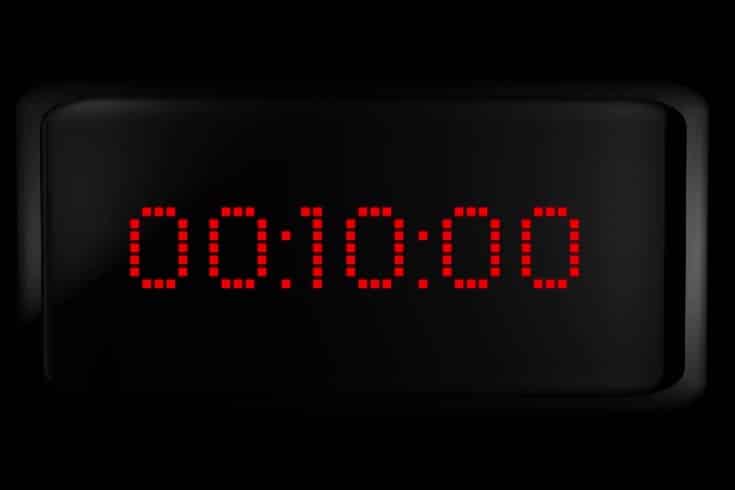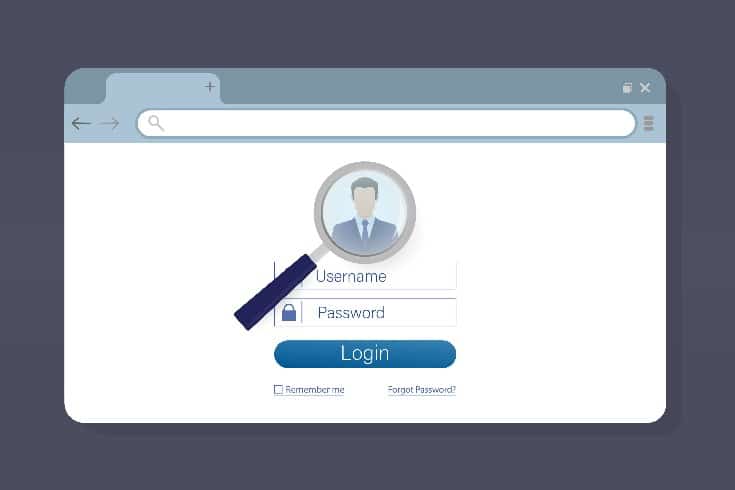Can the Poster be Identified After the Removal of an Article Causing Reputational Damage?

There are two main types of reputational damage control carried out by lawyers: the removal of defamatory articles and the identification of the individuals who posted them.
Of these, removal is comparatively simpler. In many cases, successful removal can be achieved by conducting out-of-court negotiations with the operators of the bulletin board where the article was posted, the service operators, and the server administrators hosting the site where the article was posted, in the form of a “request for transmission prevention measures”. On the other hand, identifying the poster can be more challenging. From the perspective of site operators and server administrators, this involves disclosing personal information (such as IP addresses) of users who are using their services or servers, and they often do not readily comply with such requests outside of court.
In the case of identifying the poster, the “standard” procedure is to first disclose the poster’s IP address through a “provisional disposition” procedure, and then disclose the poster’s name and address in court. However, while provisional dispositions are faster than court proceedings, it often takes 1-3 months from the time of requesting a lawyer to the disclosure of the IP address. The court part takes even longer, 3-6 months, and in contentious cases, even more time is required.
Once the name and address are disclosed, it becomes possible to make a claim for damages against the poster.
https://monolith.law/reputation/disclosure-of-the-senders-information[ja]
It is a significant problem for defamatory posts to remain online during this period. Therefore, it would be ideal to proceed in the following order:
- First, remove defamatory posts through out-of-court negotiations
- Next, disclose the IP address of the person who made the post through a provisional disposition
- Then, disclose the name and address of the person who made the post in court
- (Finally, make a claim for damages against the poster whose name and address have been identified)
But is this possible?
Disclosure of IP Address After Removal of Defamatory Articles
First, let’s discuss the feasibility of “requesting the disclosure of the IP address of the person who posted the article, after the defamatory article has been removed”.
To state the conclusion first, this is possible in many cases. However, there are two points that need to be noted.
Point 1: It is necessary to preserve evidence that ‘the article definitely existed’
In a provisional disposition for identifying the poster, you must assert and prove three major points with evidence.
- The article definitely existed on the site in question
- The article was written about oneself, not anyone else
- The article is illegal because it infringes on one’s rights (such as the right to honor or privacy)
The second and third points are about asserting and proving that ‘the article is illegal in relation to oneself’, which is always a theme in general reputation damage measures. However, the problem lies with the first point. If you delete the article first, you will not be able to secure evidence that ‘the article definitely existed on the site in question’ after the article has been deleted.
Methods of Preserving Evidence on Websites
So, how can we preserve evidence that “the article definitely existed on the site”? This is a matter of legal discussion, and there are precedents in the Intellectual Property High Court.
When submitting an Internet homepage as evidence in a trial, it is common knowledge for those involved in litigation practice that the URL in the margin is an important notation as a specific matter of that homepage.
Intellectual Property High Court Judgment, June 29, 2010 (Heisei 22)
This is the indication given. In this case, the plaintiff’s lawyer saved the webpage once on the PC, and created evidence by displaying the webpage from the PC (i.e., locally), but the court said about this evidence:
“From the notation of ‘file://C:¥DOCUME~1…AE9E3~1.KAR¥LOCALS~1¥Temp¥4LVDJ3A8.htm’ (omitted), it cannot be recognized as an Internet URL, but rather, from the notation of the first half ‘file://C:¥DOCUME~’, it is recognized as the data of a homepage recorded on a specific computer. On this point, the plaintiff argues that the then attorney-at-law imported it into his own computer’s print screen once in order to print out the homepage without defects. However, the plaintiff’s above argument is not acceptable.”
Intellectual Property High Court Judgment, June 29, 2010 (Heisei 22)
In other words, the court took issue with the fact that “the URL is not embedded in the PDF”, and judged that this evidence could not prove “that the page was definitely published on the net”.
Also, in a trial, it is necessary to note the date of creation for each piece of evidence.
Therefore, a document that preserves the content of a webpage, with the URL of the page and the date of preservation embedded in the page in a generally difficult to fake manner, is a piece of evidence that has sufficient value in a lawsuit.
Method of Evidence Preservation Using Chrome
For instance, if your browser is Chrome, the simplest method is to use the print function, check the ‘Headers and Footers’ box in ‘More Settings’, and then save as a PDF.

However, depending on the page or site, this method may cause the layout to break. It’s crucial to have someone with knowledge of evidence preservation and related legal knowledge perform the preservation. Otherwise, you may end up in a situation where you don’t have any evidence that can be presented in court, so caution is necessary.
It’s Important that the Date and Time of the Post are Clearly Displayed on the Screen

Furthermore, it is important that the date and time of the post in question are as clear as possible for evidentiary purposes. At the stage of “forcing the disclosure of the poster’s name and address in court,” as will be discussed later, you will be seeking the disclosure of log information for identifying the poster from the provider that holds log information such as “the user who was using IP address ●●● at ● year ● month ● day ● hour ● minute ● second, and their name and address.” In other words, if it is not known when the article was posted, no matter how illegal the article is, the provider will say, “With only that information, it is unclear which information can be disclosed and cannot be disclosed.”
Therefore, for the preservation of evidence, the following are necessary:
- A screen where all the necessary information (including the date and time of the post) is displayed
- Preserving it in a legally valid manner
Point to Note 2: Some sites delete IP address logs when an article is deleted
While Point 1 is a common issue across all websites, this one depends on the site. Websites do not always record the IP addresses of users who access the site and post articles. Generally, there are no legal regulations stating that “if a user posts on your site, such as a bulletin board, you must record the poster’s IP address”. Administrators of bulletin boards and similar sites only record IP addresses at their discretion, for instance, to deal with issues such as repeated meaningless posts or so-called “trolls”.
There are also bulletin boards and similar sites in the world that operate on a system where “when a bulletin board post is made, the poster’s IP address is logged, but if the administrator deletes that post, the log of the poster’s IP address is also deleted”. In this case, if the article is deleted first, the bulletin board administrator will not be able to disclose the IP address of the poster of the relevant post, because it is not retained as a log in the first place.
Whether to Delete an Article First Depends on the Website
This is entirely a matter of “it depends on the website”. When dealing with reputational damage control on various websites, you cannot make a decision unless you have the know-how, such as “this site can disclose IP addresses even if the article is deleted first” or “this site cannot disclose IP addresses if the article is deleted first”.
When requesting an article deletion, if you ask, “In addition, there is a possibility that we may file a provisional disposition for the disclosure of sender information, so please not only delete this article but also separately save the IP address of the article poster,” there are cases where they will comply with the preservation of the IP address. However, to be honest, such a statement is considered to be “better not to do if anything” in the scene of deletion by out-of-court negotiation. This is because it could give the site administrator a reason to think, “Even if I comply with the deletion, I will eventually be served with a provisional disposition for IP address disclosure, so it’s okay to lose only in the provisional disposition for deletion.”
Disclosure of Personal Information After Removal of Defamatory Articles
In the context of disclosing personal information, the process is somewhat simpler. This is because the issue mentioned in point 2 does not exist. In other words, in the case of disclosing personal information, the party involved is not the site or server where the defamatory article was posted, but the provider of the communication used at the time of posting, such as Docomo or Softbank for mobile lines, and Nifty or So-net for fixed lines. The provider is not related to the article itself and does not hold information such as “the article and the name and address of the person who posted it”. What the provider does hold is log information such as “the user who was using IP address ●●● at ● year ● month ● day ● hour ● minute ● second, and their name and address”. Whether this log information remains or not is solely a matter of “log retention period”, and is unrelated to “whether the article has been deleted or not”.
The Need for Effective Log Preservation is the Same as in Provisional Measures
However, point 1 is also present in this context, just as before. The provider, in principle, does not know “whether the article definitely existed”. This is because they only hold the aforementioned logs. To sue a provider who is unaware of this and win, you need to provide solid evidence for the following two points:
- The article definitely existed on the site in question
- The IP address of the person who posted the article is ●●● (information disclosed in provisional measures against the site administrator)
As mentioned above, the former must be properly preserved evidence.
https://monolith.law/reputation/reputation-lawyers-fee[ja]
If you would like to learn about the content of this article through a video, please watch the video on our YouTube channel.
Category: Internet





















